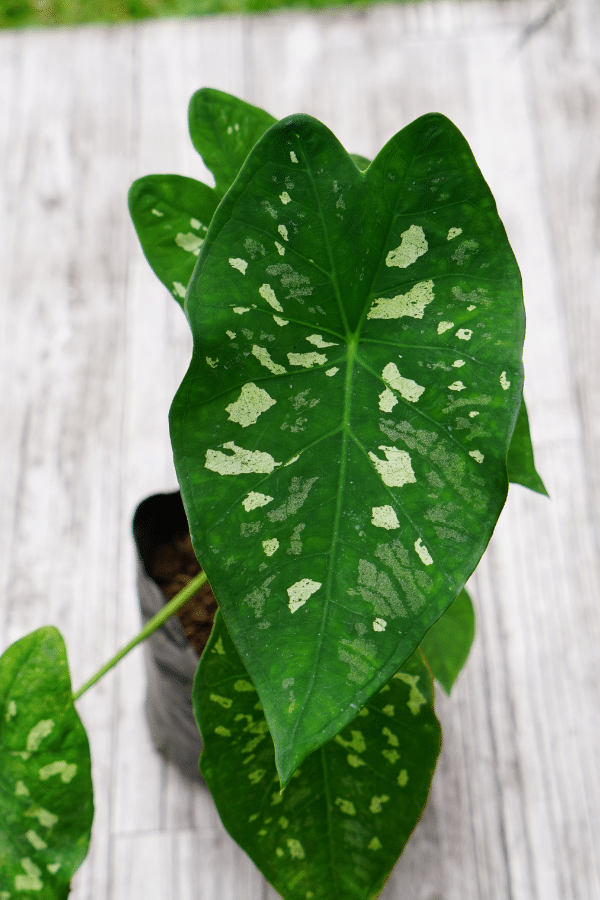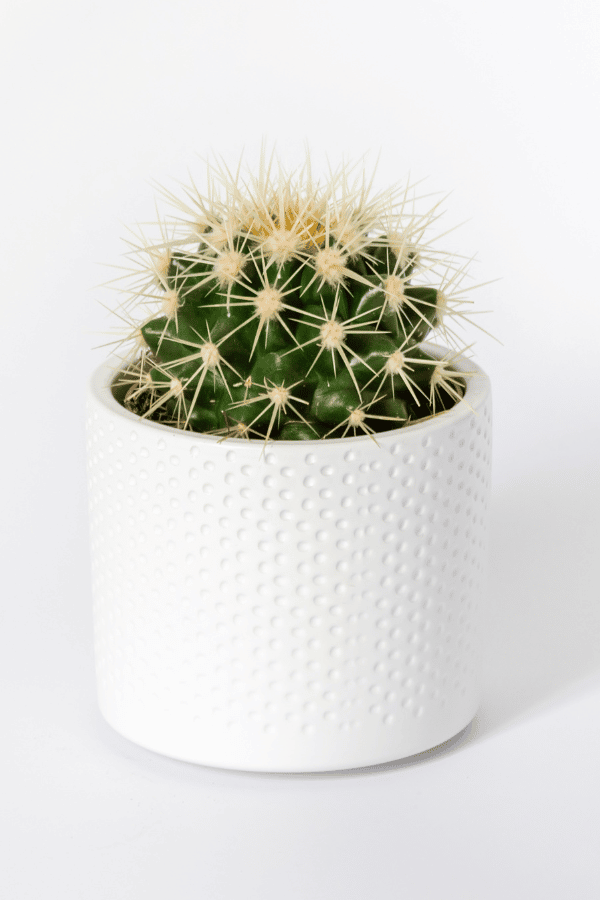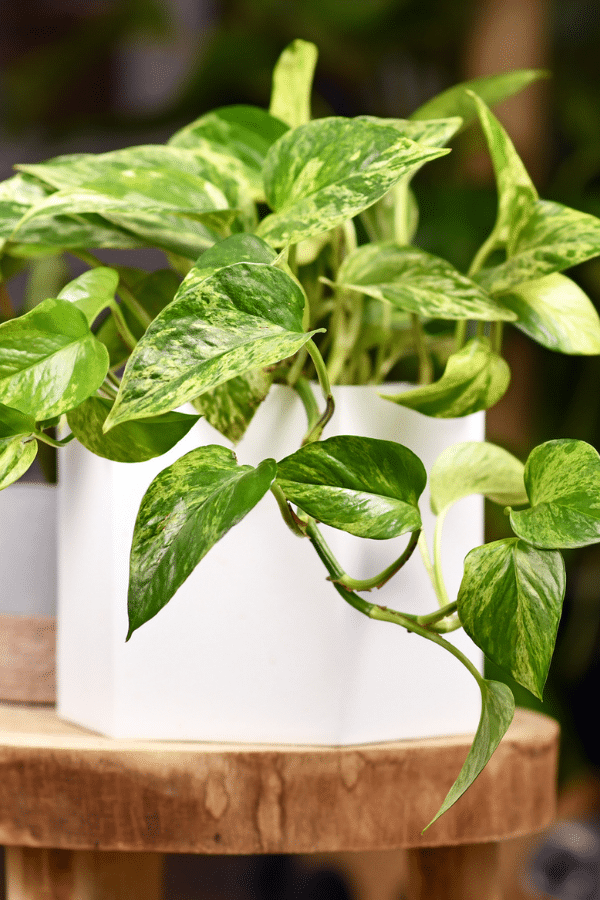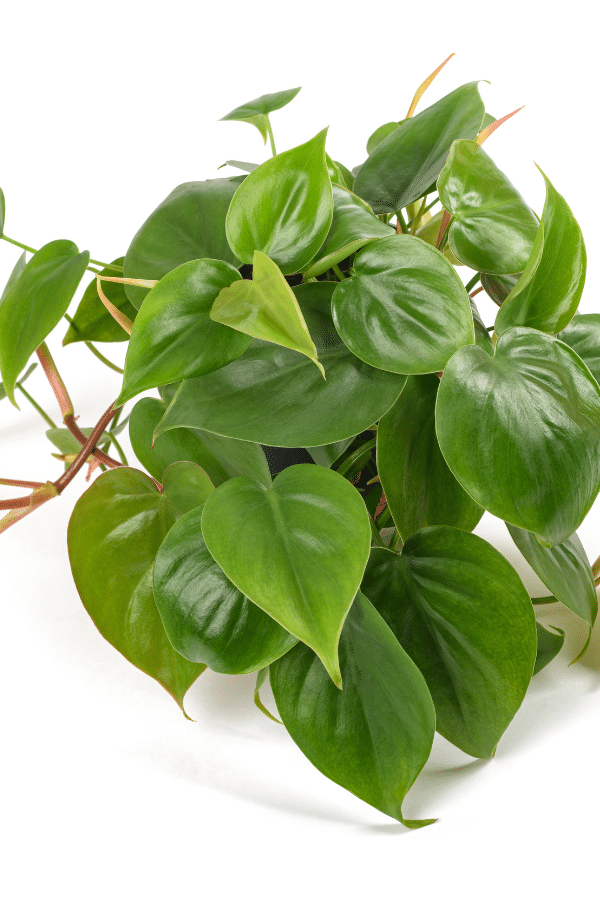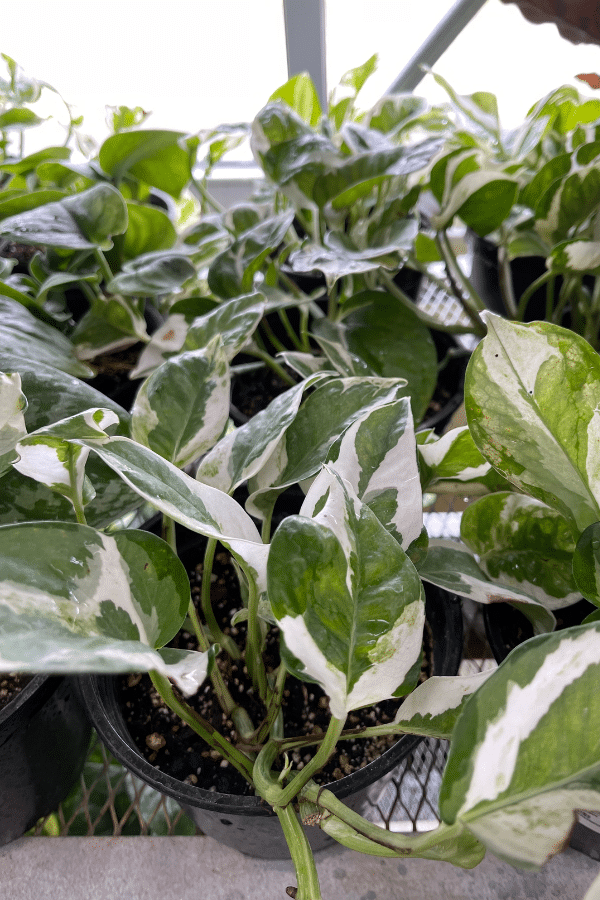Polka Dot Plant (Hypoestes Phyllostachya)
Scientific Name: Hypoestes Phyllostachya
Polka Dot Plant care is a medium to care for plant. If you want a houseplant that’s bright and pink polka dots and gives some texture, a Polka Dot Plant may be for you.
To give the Hypoestes Phyllostachya plant the best care, it requires well-draining soil, keep the soil moist, provide it with bright indirect sunlight, temperatures ranging from 60-80F, and average to high humidity levels.
Quick Care Overview
| Common Name | Polka Dot Plant, Flamingo Plant, Freckle Face |
| Scientific Name | Hypoestes Phyllostachya |
| Family | Acanthaceae |
| Origin | Madagascar |
| Growth Rate | Medium |
| Identification | Green leaves with splashes of pink spots |
| Height | Up to 2 feet tall |
| Soil | Well-draining soil |
| Water | Soil likes to remain consistently moist |
| Temperature | 60-80F |
| Sunlight | Bright indirect sunlight |
| Toxic to Cats & Dogs | No |
| Toxic to Humans | No |
| Pests | Aphids, whitefly, and mealybugs |
| Diseases | Root rot, leaf spot, powdery mildew |
Below we will dive deep into this Polka Dot Plant care guide.
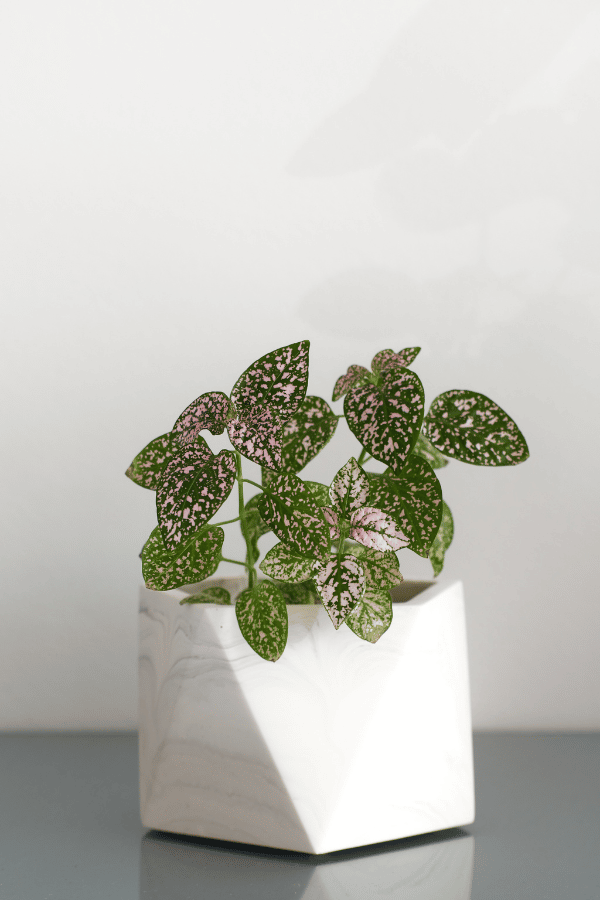
Polka Dot Plant History
Hypoestes Phyllostachya, otherwise known as the Polka Dot Plant, is a compact plant with eye-catching variegated foliage. Many Polka Dot plants have a pink base with green spots. Easy to care for and having a moderate growth rate, these compact plants are a perfect way to add some color to the home.
Polka Dot Plant Identification
Polka Dot plants come in a large array of colors ranging from white, yellow, red, green, and magenta. The most typical polka dot plant can be recognized by its dark green leaves that are speckled with pink spots, or conversely, pink leaves with green spots.
Polka Dot Plant Growth Facts
The Polka Dot Plant will grow at a moderate pace and is easy to care for, as long as you keep consistently moist and keep it warm with lots of indirect, bright light.
How Big Does a Polka Dot Plant Get?
The Polka Dot Plant will grow up to 2 feet tall and 2 feet wide.
Polka Dot Plant Care
The key to growing a happy polka dot plant is regularly watering it, feeding it, and giving it warmth and humidity. In addition, flowers should be pinched off to keep the plant focused on growing vibrant foliage.
Polka Dot Plant Soil
Hypoestes Phyllostachya will do well being grown in a quality commercial potting mix indicated for houseplants or coco coir or peat moss. Incorporations of perlite or pumice will help improve the soil’s drainage.
Polka Dot Plant Fertilizer
During the warm growing season, as the polka dot plant is a heavy feeder, you will need to fertilize your plant with a balanced liquid organic fertilizer indicated for houseplants. Ensure you follow all label instructions and do not overfeed. Halt feeding in the fall and do not feed during the winter.
Polka Dot Plant Watering
The Polka Dot Plant likes to remain consistently moist but not oversaturated with water. Therefore, do not let the soil completely dry out or become soggy. Instead, rewater your polka dot plant after the top .5″ of soil has dried. Watering frequency should be reduced during the winter.
Polka Dot Plant Light Requirements
When grown indoors, select a site for your Polka Dot Plant with bright indirect light, such as from an east- or south-facing window. Too low or too intense of light may cause foliage to fade. If grown outdoors, make sure it’s in zones 10 and 11, and be sure to not provide it with too much light and give it some shade.
Polka Dot Plant Temperature & Humidity
Your Polka Dot Plant will prefer to be kept above 60 degrees Fahrenheit at all times. As this plant likes to remain warm and humid, installing a humidifier or pebble tray may be a good idea. The polka dot plant prefers to be grown in a humidity level above 50%.
Repotting Polka Dot Plant
You should repot your Polka Dot Plant after seeing roots growing out of its drainage holes. Polka dot plants should be repotted in the spring. Select a container that is 1-2 inches larger than the previous container.
Polka Dot Plant Maintenance & Pruning
Polka Dot Plants often get leggy with maturity. Periodically, clean up any long lanky branches using sharp, clean pruning shears. Weekly, you may prune back the top two leaves on each stem to create a bushier appearance, which will help maintain the plant’s health and growth.
This plant can bloom in late summer. If you want all of the energy to go to the plant’s foliage, you can trim off blooms as they arise. After flowering, the plant will naturally tend to die or go into dormancy.
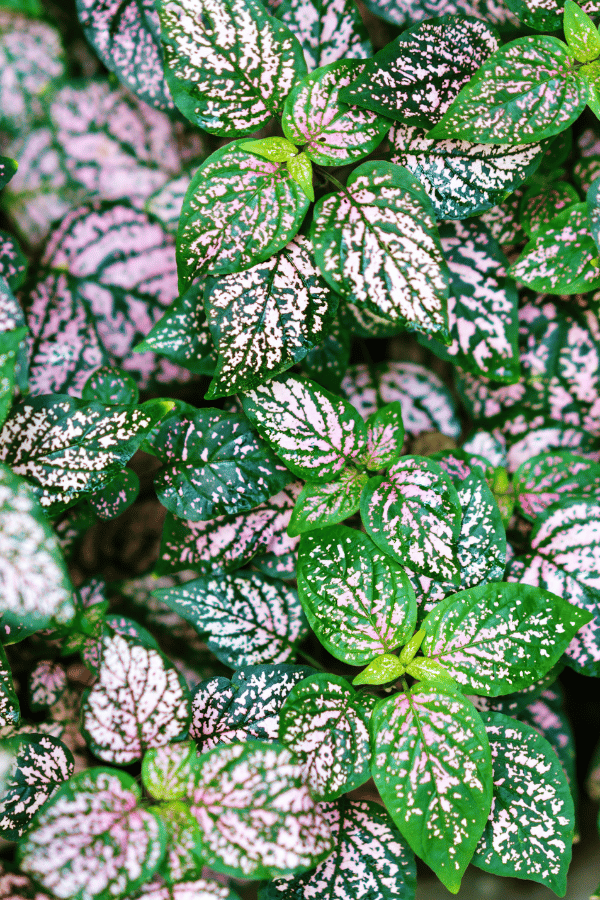
Polka Dot Plant Propagation
Polka Dot Plants may be easily propagated by stem cuttings. Propagation should be done in the spring or summer. To propagate, cut a piece of stem that is at least 2-4 inches long. Place the cutting(s) into water and refresh the water as it evaporates or gets murky. After the roots have grown up to 2″ (which may take several weeks), they may be planting into soil. Alternatively, the cutting(s) may be planted directly into the soil. Rooting hormone may assist the rooting process. After planting, keep moist, and place in indirect light. Within several months the plant should become established and should stay rooted if gently tugged at.
Polka Dot Plant Toxicity
Toxicity to Humans
The Polka Dot Plant is not considered to be toxic to humans. However, it is not considered edible and should not be ingested. Ingestion may lead to digestive upset.
Toxicity to Cats & Dogs
Luckily, the Polka Dot Plant is not considered toxic to pets. However, you should avoid allowing your cat or dog to consume this plant.
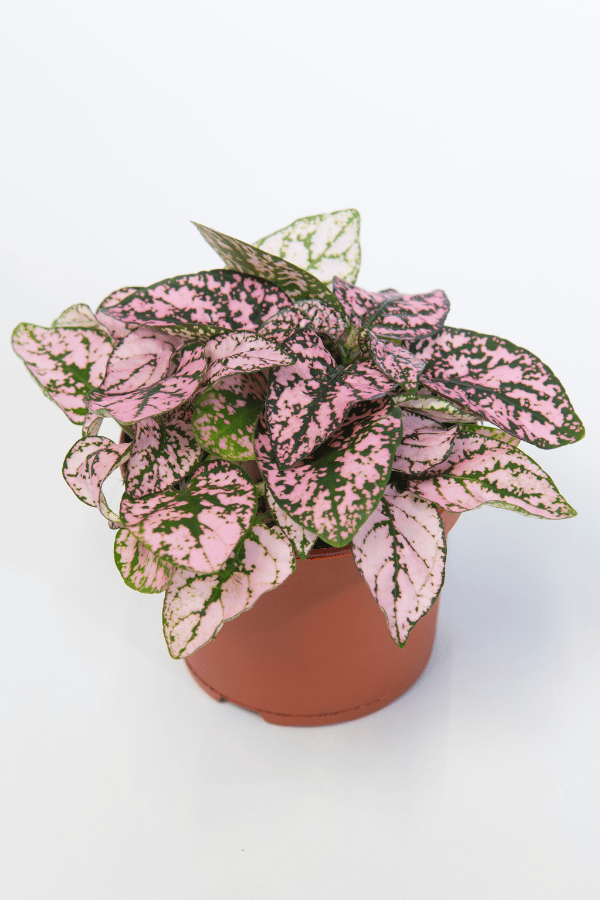
Polka Dot Plant Problems
Polka Dot Plant Leaves Turning Yellow
When the foliage of the Polka Dot Plant turns yellow, it is often due to overwatering. Ensure that you do not overwater your plant or allow it to sit in standing water within the plant’s drainage tray.
Polka Dot Plant Leaves Turning Brown
The most common cause of foliage turning brown when it comes to the Polka Dot Plant is due to insufficient water or humidity. Alternatively, foliage browning may be due to too much direct sun, overfertilization, or chemicals in the tap water.
Polka Dot Plant Diseases
Due to its high watering and humidity requirements, the Polka Dot Plant may become prone to issues such as powdery mildew, leaf spot, or root rot. Therefore, ensure that you do not overwater your plant. Upon identifying disease, isolate your plant, and treat it with a fungicide, such as copper.
Polka Dot Plant Pests
The Polka Dot Plant may become affected by aphids, whiteflies, mealybugs, and more. Upon identifying an infestation, isolate your plant, and treat it with a pesticide, such as neem oil or insecticidal soap.

